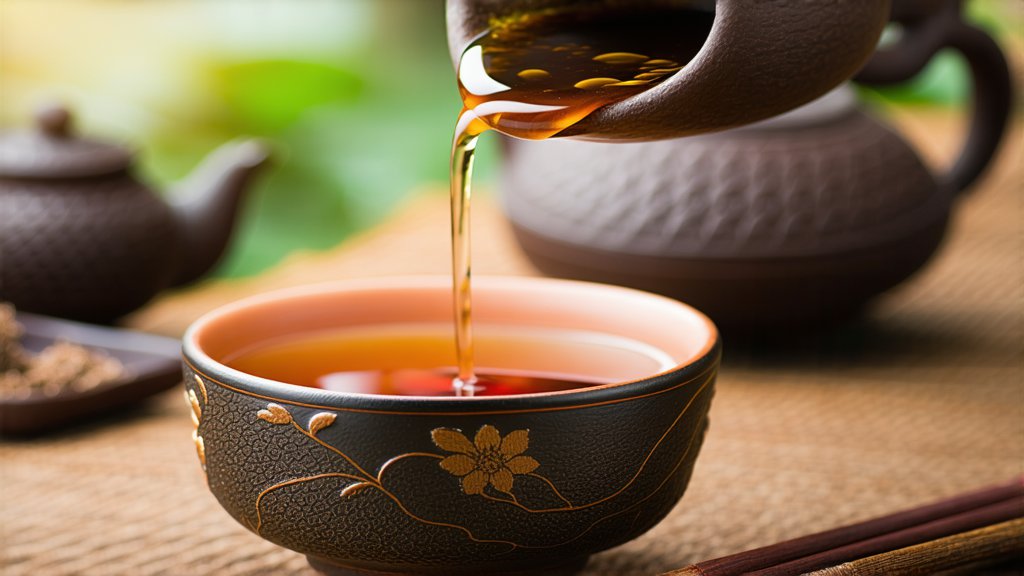
Pu-erh tea, a gem in the crown of Chinese tea culture, is not merely a beverage but an experience steeped in tradition, history, and unparalleled craftsmanship. Originating from the Yunnan province, this unique variety of dark tea has captivated tea enthusiasts worldwide for centuries, owing to its distinctive flavor profile that matures gracefully over time. This article delves into the fascinating world of Pu-erh, exploring its historical roots, the diverse types it encompasses, the meticulous process of its creation, and the art of tasting that unlocks its full potential.
A Glimpse into History
The story of Pu-erh tea dates back to the Tang Dynasty (618-907 AD), though its popularity surged during the Ming (1368-1644) and Qing (1644-1912) dynasties. It was named after the market town of Pu'er in Yunnan, which became a crucial hub for tea trading along the ancient Tea Horse Road. This route facilitated the exchange of tea between China and Tibet, fostering a deep cultural connection and enhancing the tea's reputation.
Varietals of Pu-erh
Pu-erh tea is broadly categorized into two main types based on processing methods: Raw Pu-erh (Sheng) and Ripe Pu-erh (Shou).
-
Raw Pu-erh (Sheng): Also known as "Sheng" tea, this type undergoes minimal processing post-harvest. The leaves are plucked, sun-dried, and then compressed into various shapes such as cakes, bricks, or tuochas without undergoing artificial fermentation. Over time, Sheng Pu-erh undergoes natural aging, gradually transforming its flavor from astringent and vegetal to smooth, earthy, and complex.
-
Ripe Pu-erh (Shou): In contrast, Shou tea is subjected to a controlled fermentation process called "wo dui," where piles of tea are moistened and turned regularly to accelerate microbial activity. This process mimics years of natural aging, resulting in a mellow, rich taste with notes of caramel, wood, and sometimes even hints of dried fruit.
The Art of Craftsmanship
The production of Pu-erh tea is an intricate dance between nature and human skill. Here’s an overview of the key steps involved:
-
Harvesting: Only the tender top leaves and buds are handpicked during specific seasons to ensure optimal quality.
-
Withering: Freshly picked leaves are spread out to wilt under the sun, reducing moisture content and preparing them for further processing.
-
Fixation: The leaves undergo a brief steaming or pan-frying to halt oxidation, preserving their green color and freshness.
-
Rolling and Shaping: The softened leaves are rolled into tight spirals or twisted into balls before being compressed into traditional forms.
-
Drying: The shaped tea is dried again to remove excess moisture and stabilize the product.
-
Fermentation (for Shou): If producing Shou Pu-erh, the tea undergoes the wo dui process, involving regular turning and monitoring to control temperature and humidity, promoting beneficial microbial growth.
The Tasting Experience
Tasting Pu-erh tea is an art form that requires patience and a discerning palate. Here’s how to fully appreciate its depth:
-
Preparation: Use a Yixing clay teapot or a gaiwan for the best results. Rinse the leaves briefly with hot water to 'wake' them up.
-
Infusion: Steep the tea at around 95-100°C (203-212°F) for Raw Pu-erh and slightly cooler for Ripe Pu-erh. Start with shorter steeping times (about 10 seconds) and gradually increase as subsequent infusions reveal more character.
-
Observation: Note the tea's aroma, which evolves with each steep—fresh grass, earthiness, aged wood, or even subtle florals.
-
Tasting: Pay attention to the texture, body, and aftertaste. A well-aged Pu-erh should have a smooth mouthfeel, complex flavors that develop over multiple infusions, and a lingering sweetness or dryness at the end.
-
Appreciation: Finally, take a moment to appreciate the journey each sip represents—from the ancient tea forests of Yunnan to your cup, carrying centuries of tradition and the hands that crafted it.
In conclusion, Pu-erh tea embodies the essence of Chinese tea culture, offering a window into the past while continuing to evolve with each passing year. Its unique aging process, coupled with skilled craftsmanship, creates a beverage that transcends time, inviting drinkers to embark on a sensory adventure that celebrates both nature's bounty and humanity's artistry. Whether you're a seasoned tea connoisseur or a curious newcomer, exploring the world of tea, Pu-erh promises a profound and unforgettable experience.